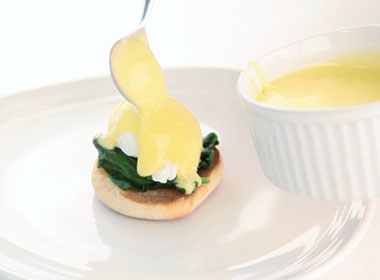
Technique: Hollandaise Sauce
In this new series of videos, our chefs are sharing some of the classic French techniques we teach to more than 20,000 students on our programmes around the ...
Entering the wonderful world of cookery could mean two things – you’re one step closer to creating magic in the kitchen; or you’re about to learn some great number of cooking techniques. It is no secret that the outcome of a dish varies nearly as much through cooking methods as it does through the ingredients used in the preparation. Let’s go over a few of the most common French cooking classic techniques that are being highlighted in our courses at Le Cordon Bleu Malaysia culinary institute.
Like a professional fishmonger, fish filleting is one of the skills you will acquire in a French culinary kitchen to make sure the fillets are removed perfectly. Here’s the Le Cordon Bleu way of filleting your fish in the correct way. But first, grab your filleting knife and your scaler.
Another classic technique taught in French cuisine is turning vegetables. They are turned to form a similar barrel shape and size to ensure even cooking and a pleasing loo. The chefs of Le Cordon Bleu Malaysia will show you how to turn vegetables; potato, carrot, zucchini trimmed into the “cocotte” sized oval shape – just one of the skills you will learn from the Cuisine Diploma programme. Here’s the Le Cordon Bleu way of turning vegetables. But of course, before we start, equip yourself with a turning knife.
In French cuisine, there are a few intricate methods used. However, some are quite straightforward but remain a must-know skill in any chef’s repertoire. One of these is knotting, often applied to prepare meat for roasting. Knotting a roast or applying a butcher’s knot is a useful technique that helps the block of meat retain a nice shape as it cooks, leading to both better presentation and more even cooking . Knotting a piece of meat will also help to keep the stuffing inside. Based on the video, assuming you are right handed, here’s how you knot perfectly, Le Cordon Bleu style.
Et voila!
Those are some of the classical cooking techniques that are commonly used in French cuisine. These instructional videos make it seem so easy but like any other skillset, the art of French culinary is learned by careful attention to detail in all the steps and a lot of practice. Le Cordon Bleu Malaysia culinary academy will be with you every step of the way in making sure you get the best guidance through its programmes and short courses where you will be practising the techniques shown above. When these techniques are mastered, you will be able to include them in your repertoire of la cuisine Française.
Copyright © 2025 Le Cordon Bleu International B.V. All Rights Reserved.